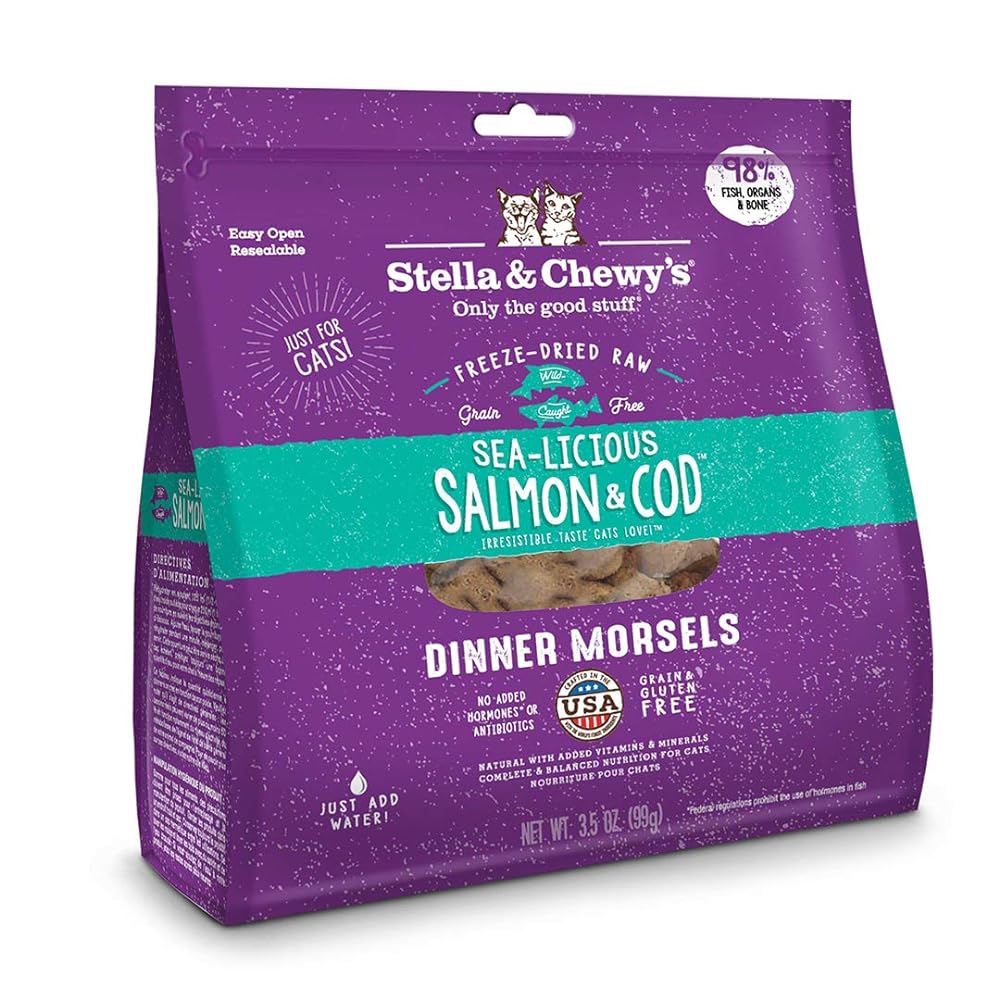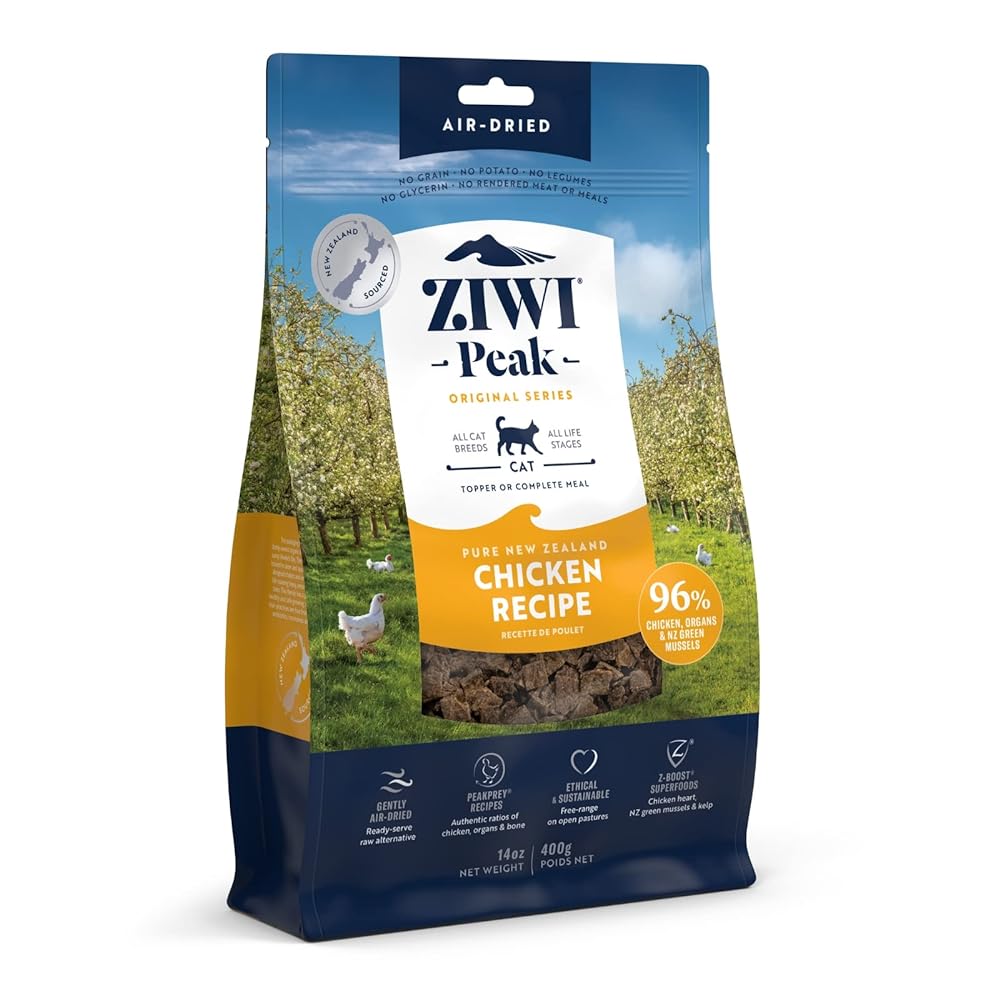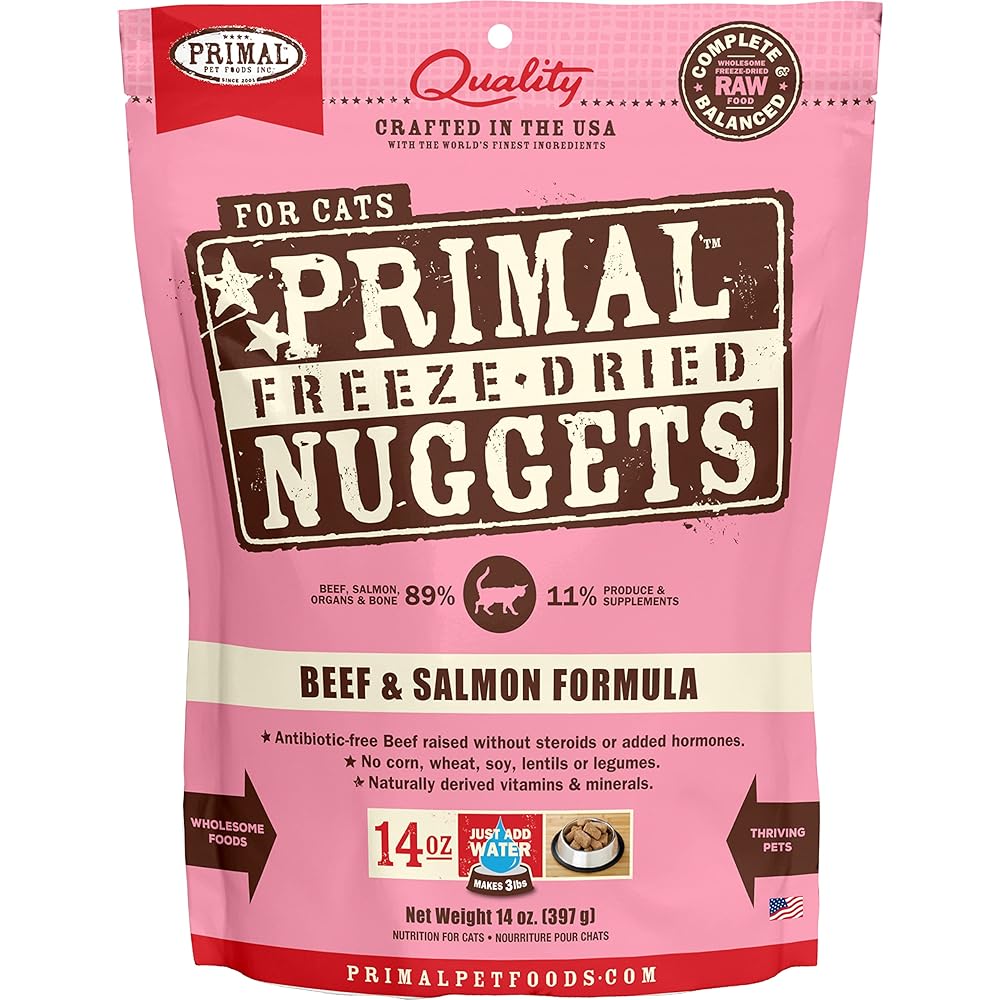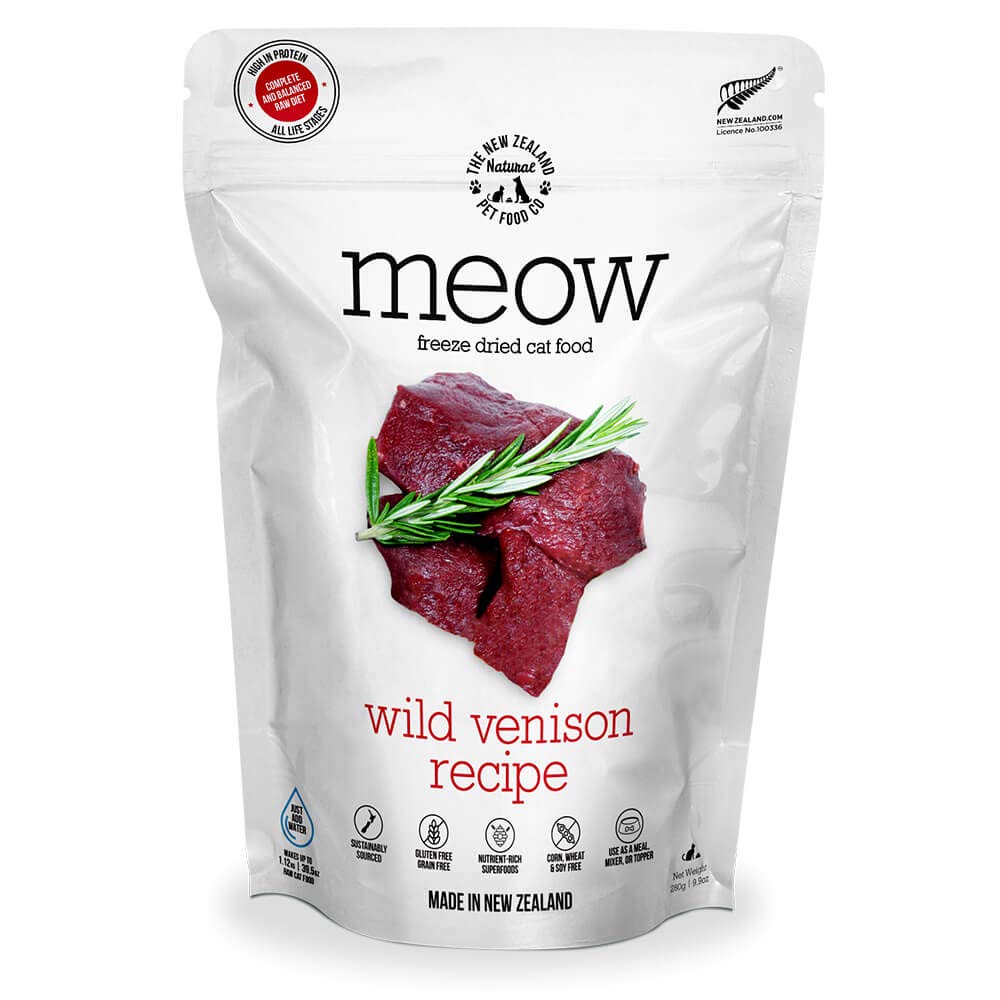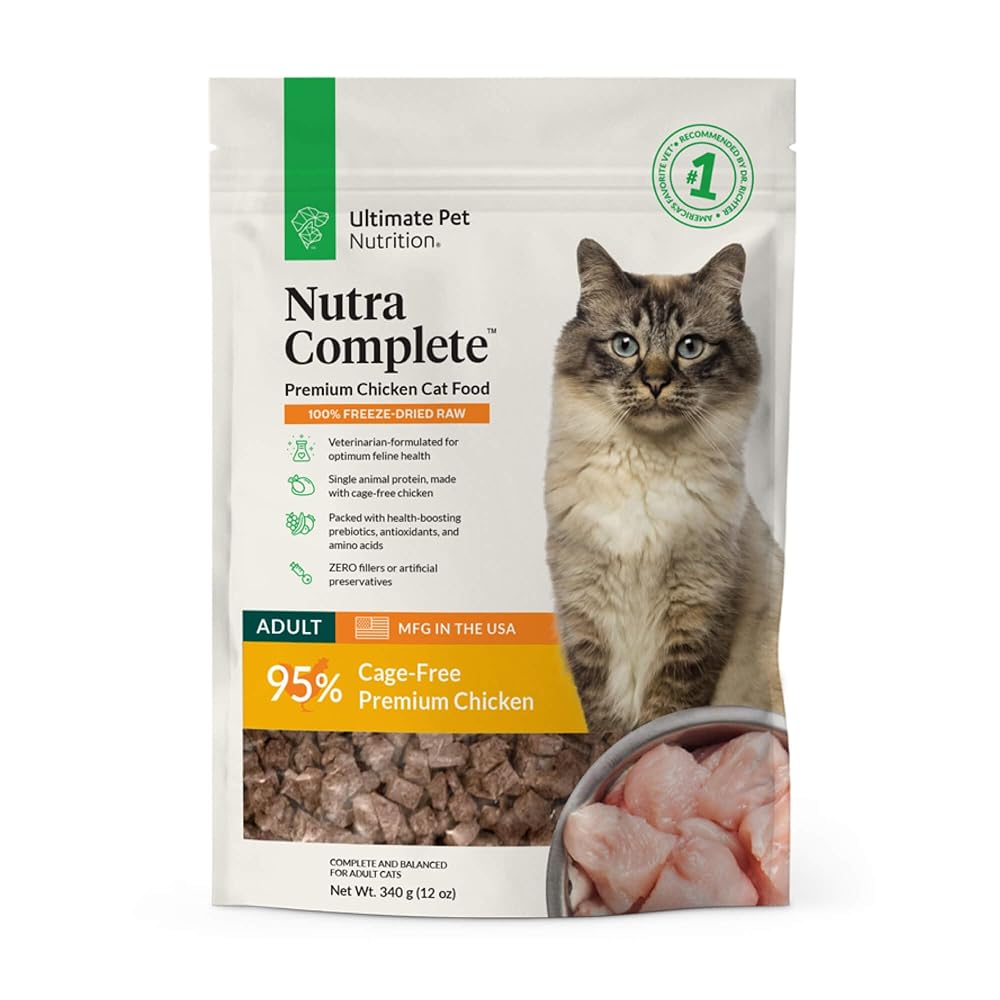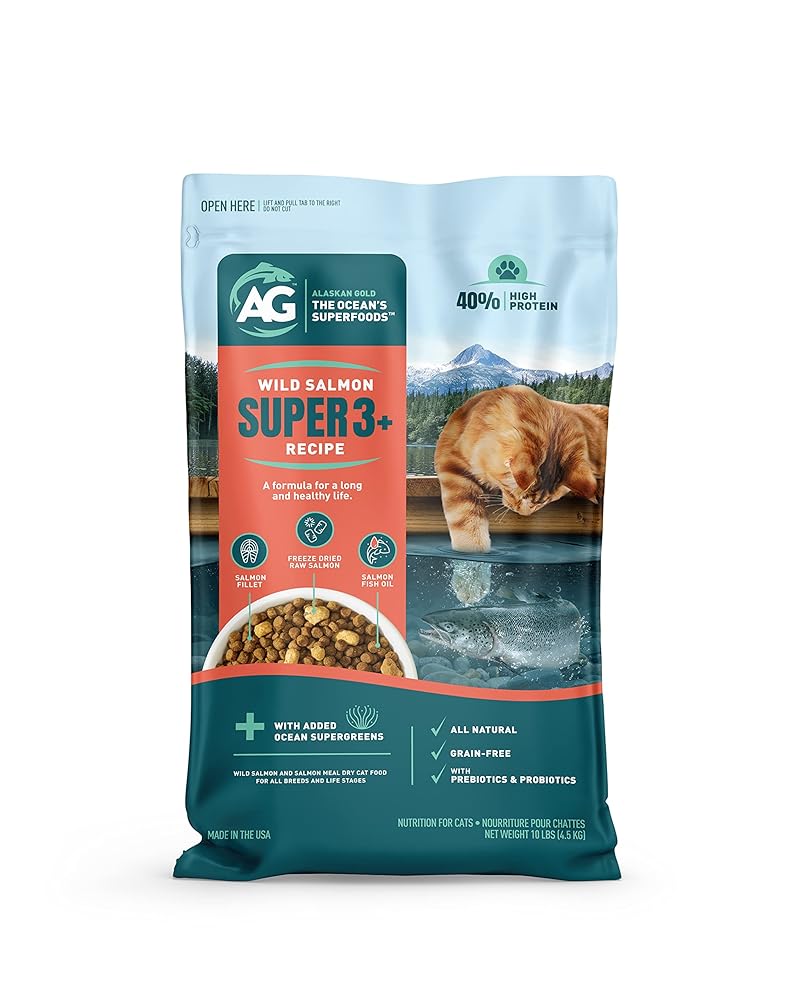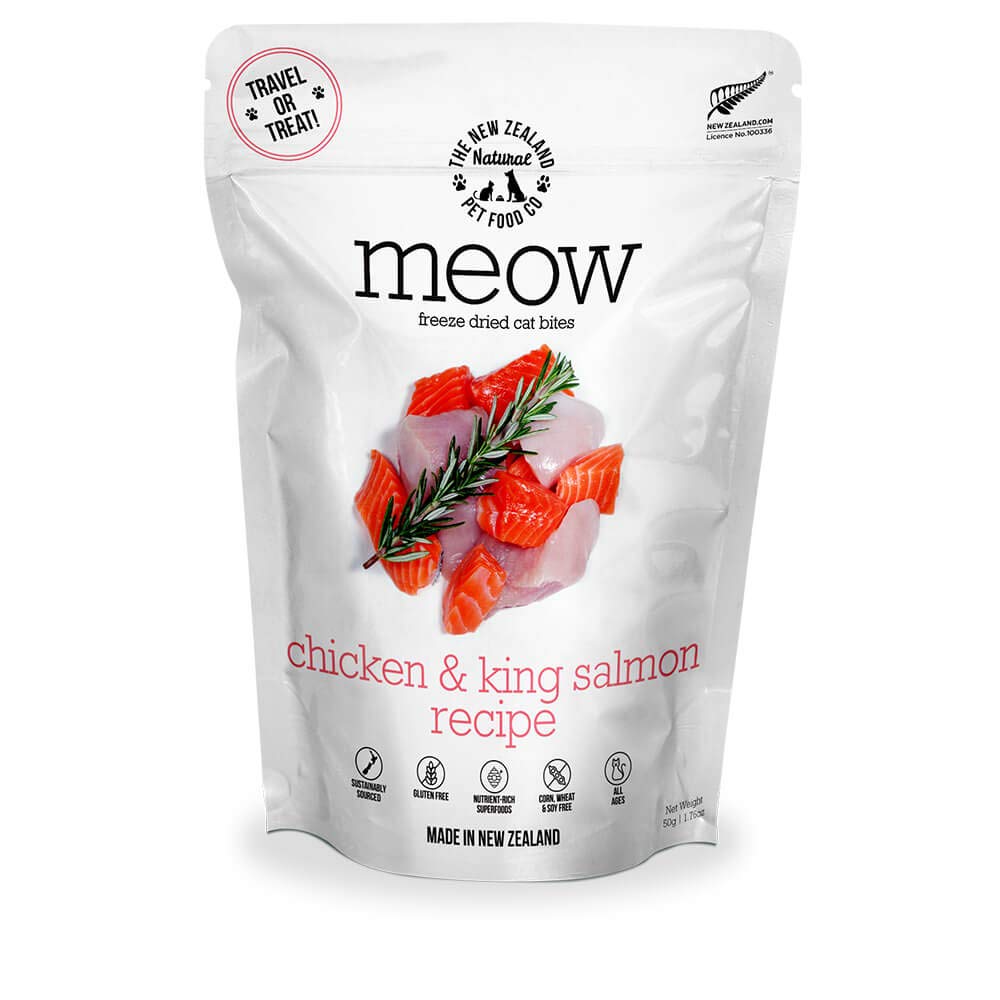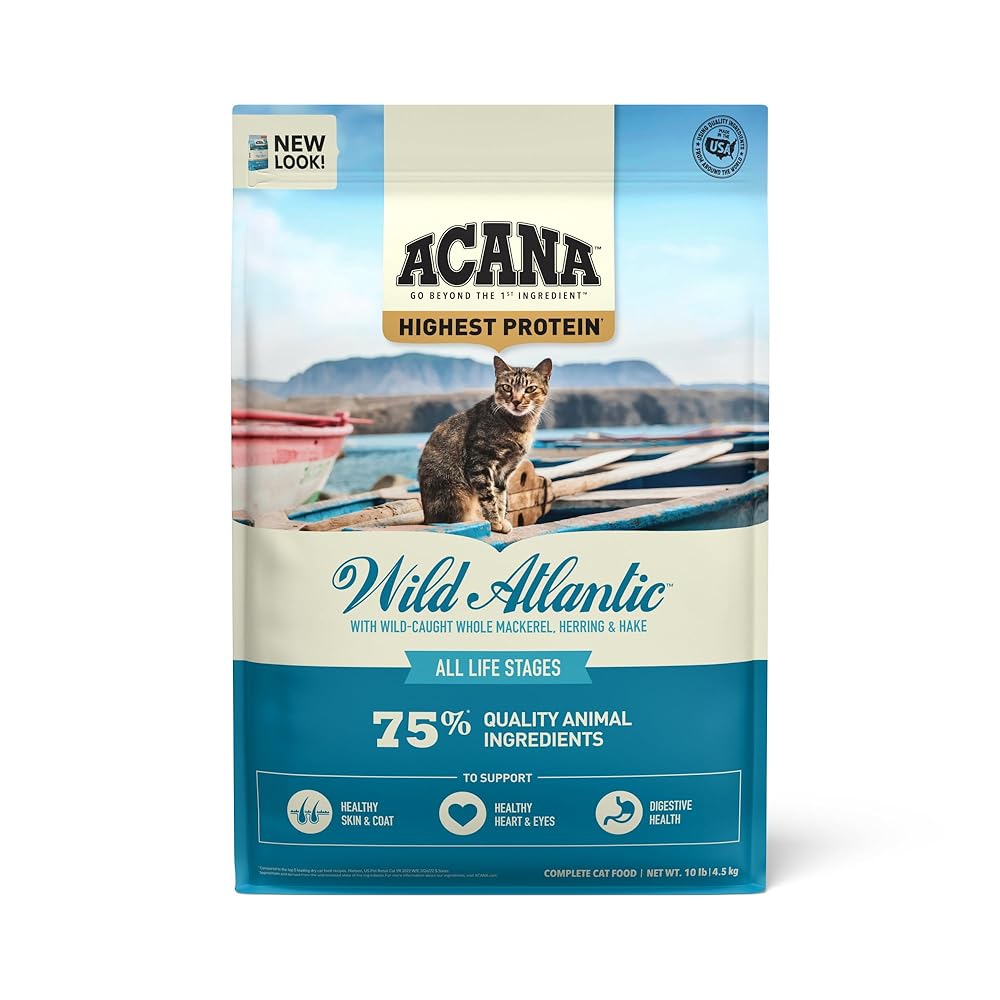iHeartCats is reader-supported. When you buy via links on our site, we may earn an affiliate commission at no extra cost to you.
In the vast realm of feline nutrition, the significance of carbohydrates has become an area of focused interest for many cat parents. Cats, as obligate carnivores, have evolved primarily on a diet of protein and fats, leading some experts to advocate for low-carb diets that better align with their natural dietary preferences. This article delves into the best low-carb cat foods available in the market, highlighting their benefits and helping feline guardians make informed choices for their furry friends.
#1 – Stella & Chewy’s Freeze-Dried Raw Sea-Licious Salmon & Cod Dinner Morsels Cat Food, 3.5 oz. Bag, Freeze-Dried Raw Cat Dinner Morsels
Stella & Chewy’s Freeze-Dried Raw Sea-Licious Salmon & Cod Dinner Morsels Cat Food is a high-quality cat food made with 98% wild-caught fish, organs, and bones. It is all-natural and minimally processed, containing no added hormones, antibiotics, grains, or fillers. This product is best for pet owners who want to provide their cats with raw, nutritious meals.
Best For: Best ingredient sourcing.
#2 – ZIWI Peak Air-Dried Cat Food – All Natural, High Protein, Grain Free & Limited Ingredient with Superfoods (Chicken, 14 oz)
ZIWI Peak Air-Dried Cat Food is a high-protein, grain-free cat food made with all-natural ingredients. It features authentic whole-prey ratios, including 96% free-range chicken, organs, bone, and New Zealand green mussels. This cat food is ideal for food-sensitive cats as it is limited in ingredients and does not contain cheap fillers such as grain, potato, or peas. It can be used as a topper for a flavor boost or as a complete meal for cats of all life stages.
Best For: Best Overall
#3 – Primal Freeze Dried Cat Food Nuggets Beef & Salmon, Complete & Balanced Scoop & Serve Healthy Grain Free Raw Cat Food, Crafted in The USA (14 oz)
The Primal Freeze Dried Cat Food Nuggets Beef & Salmon is a complete and balanced raw cat food made with grass-fed beef, wild-caught salmon, and organic fruits and vegetables. It is free from common allergens like corn, wheat, soy, lentils, and legumes. This freeze-dried cat food is convenient to use and provides high digestibility for maximum nutrient absorption, promoting a healthy weight, clear eyes, and a shiny coat. It is made in the USA and is suitable for cats of all life stages.
Best For: A budget-friendly option for cat owners seeking a high-quality raw food diet.
#4 – The New Zealand Natural Pet Food Co. Meow Wild Venison Freeze-Dried Raw Cat Food, Mixer, Topper, or Treat – High Protein, Natural, Limited Ingredient Recipe 9.9 oz
The New Zealand Natural Pet Food Co. Meow Wild Venison Freeze-Dried Raw Cat Food is a high protein, natural, and limited ingredient recipe. The food is freeze-dried to protect the natural enzymes and nutrients. It can be used as a complete meal, a topper, a mixer, or a treat for cats.
Best For: Cats with allergies or sensitivities.
#5 – ULTIMATE PET NUTRITION Nutra Complete Premium Chicken Cat Food – Freeze Dried Chicken Cat Food – Feline Freeze Dried Food (12 Oz)
The Ultimate Pet Nutrition Nutra Complete Premium Chicken Cat Food is a freeze-dried cat food formula made with protein-packed chicken, seeds, fruits, and vegetables. It supports healthy digestion, immune function, vitality, and overall well-being in cats. The product is quality-tested for potency at an independent, third-party facility.
Best For: Overall cat nutrition and well-being. (best overall)
#6 – Alaskan Gold SUPER3+ (Salmon+Freeze Dried Raw Salmon+Salmon Fish Oil) Dry Cat Food | Kitten & Adult | High-Protein | Grain-Free | Allergy & Digestive Support| All-Natural | 10-lbs
The Alaskan Gold SUPER3+ is a dry cat food that combines high-protein, grain-free salmon kibble with freeze-dried raw salmon and salmon fish oil. It is designed to promote overall health, support allergies, and sensitive stomachs, and provide nourishment for healthy skin and coat. The recipe is crafted by expert pet nutritionists and does not contain any cheap fillers or artificial ingredients.
Best For: Allergy & Digestive Support
#7 – The New Zealand Natural Pet Food Co. Meow Chicken & King Salmon Freeze Dried Raw Cat Food, Mixer, or Topper, or Treat – High Protein, Natural, Limited Ingredient Recipe 1.76 oz
The New Zealand Natural Pet Food Co. Meow Chicken & King Salmon Freeze Dried Raw Cat Food is a high protein, natural, limited ingredient recipe that can be used as a meal, mixer, topper, or treat for cats. It is made in small batches in New Zealand using cage-free chicken and sustainably caught salmon. The recipe includes superfoods like kelp, New Zealand green mussel, manuka honey, organic virgin coconut oil, and hoki oil, and is free from artificial preservatives, flavors, or fillers, making it suitable for pets with allergies or sensitivities.
Best For: Best Overall
#8 – ACANA Highest Protein Dry Cat Food, Wild Atlantic, Grain Free Saltwater Fish With Freeze-Dried Liver Recipe, 10lb
ACANA Highest Protein Dry Cat Food, Wild Atlantic, Grain Free Saltwater Fish With Freeze-Dried Liver Recipe is a cat food made in the USA that boasts a high protein content. It includes 75% wild-caught whole mackerel, herring, and hake, and does not contain artificial flavors, colors, or preservatives. The recipe also includes fiber, probiotics, omega-3 and omega-6 fatty acids, and taurine, EPA, and DHA to support digestive health, a healthy coat, and eye and heart health in cats.
Best For: Best Overall
#9 – BIXBI Rawbble Freeze-Dried Cat Food, Chicken Recipe, 3.5 oz – 95% Meat and Organs, No Fillers – Pantry-Friendly Raw Cat Food for Meal, Treat or Food Topper – USA Made in Small Batches
The BIXBI Rawbble Freeze Dried Cat Food is a pantry-friendly raw cat food option made with 95% meat and organs, and no fillers. It is made in small batches in the USA using USDA-inspected and passed free-range chicken. This grain-free and gluten-free cat food contains no animal meal, added hormones, or antibiotics.
Best For: Cats looking for a high-quality, raw food option.
What Are The Benefits of a Low Carb Cat Food?
Low-carb cat foods offer several potential benefits rooted in the natural dietary habits of cats:
- Alignment with Natural Diet: Cats are obligate carnivores, which means their natural diet consists primarily of meats. In the wild, their intake of carbohydrates would be minimal. Thus, a low-carb diet aligns more closely with their evolutionary nutrition.
- Weight Management: Cats on a high-carbohydrate diet may be more prone to obesity. Reducing carbohydrate intake can help control and manage weight, especially when combined with appropriate portion sizes and regular activity.
- Stabilized Blood Sugar Levels: Low-carb diets can help regulate blood sugar levels. This is particularly beneficial for diabetic cats, as high-carb diets can cause rapid spikes in blood sugar.
- Digestive Health: Some cats may have difficulty digesting grains or certain carbohydrates, which can lead to gastrointestinal issues. Low-carb diets can alleviate some of these digestive concerns.
- Reduced Allergen Exposure: Grains are among the common allergens for cats. By reducing or eliminating grains, you can potentially reduce the risk of food allergies or sensitivities.
Always consult with a veterinarian before making significant changes to your cat’s diet, especially if they have underlying health conditions.
Do Cats Need Carbohydrates?
Cats do not have a strict requirement for dietary carbohydrates in the same way that they do for certain amino acids, fats, and vitamins. Here’s a more in-depth look:
- Obligate Carnivores: Cats are obligate carnivores, meaning their natural diet in the wild consists primarily of protein from animal sources. Their evolutionary diet is low in carbohydrates.
- Metabolic Adaptations: Cats have unique metabolic adaptations that allow them to derive energy and glucose primarily from protein and fat, rather than carbohydrates.
- Limited Enzymatic Activity: Cats have reduced enzymatic activity for carbohydrate digestion in comparison to omnivorous mammals. While they can digest some carbohydrates, they do so less efficiently than species like dogs or humans.
- However, Not All Carbs Are “Bad”: Some carbohydrates, especially those from high-quality, digestible sources, can be included in a cat’s diet without issue. They can serve as an energy source, and in commercial cat foods, they can also play roles in food processing, texture, and palatability.
- Disease Consideration: For cats with certain health conditions, such as diabetes, the type and amount of carbohydrates in the diet can be particularly important. In these instances, a controlled and potentially reduced carbohydrate intake might be beneficial.
In conclusion, while cats do not have a strict nutritional requirement for carbohydrates, they can digest and utilize them to some extent. However, the primary focus of a cat’s diet should be on high-quality animal proteins and fats. Any inclusion of carbohydrates should be considered carefully and chosen for digestibility and nutritional value.
Frequently Asked Questions About Low-Carb Cat Foods
1. Why are low-carb cat foods recommended for some cats?
Low-carb cat foods can be beneficial for cats with certain health conditions, such as diabetes, as they can help regulate blood sugar levels. They also align closely with a cat’s natural diet, which is high in protein and low in carbohydrates.
2. Do cats have a natural requirement for carbohydrates?
No, cats are obligate carnivores and do not have a strict dietary requirement for carbohydrates. Their natural diet consists primarily of proteins and fats from animal sources.
3. Can cats digest carbohydrates?
While cats can digest some carbohydrates, their bodies are primarily adapted to digest proteins and fats. They have limited enzymes for breaking down carbs, so it’s important to ensure any included are easily digestible.
4. How can I tell if cat food is low-carb?
You can check the nutritional information on the cat food label. Look for the carbohydrate percentage and ensure it’s lower than typical cat foods. Ingredients are listed by weight, so fewer grain and starch sources indicate lower carbs.
5. Are low-carb diets suitable for kittens?
Kittens have higher energy requirements and can benefit from diverse energy sources, including carbohydrates. However, the primary focus should still be on high-quality animal proteins. Consult with a veterinarian before making significant dietary changes.
6. Can a low-carb diet help with my cat’s weight management?
Yes, for some cats, a low-carb diet can help in weight management. Reducing carbs can decrease empty calorie intake and emphasize protein, which can promote lean muscle mass.
7. How do I transition my cat to a low-carb diet?
Transition slowly over a week or more, mixing increasing amounts of the low-carb food with their current food. This gradual switch helps prevent digestive upset and ensures your cat accepts the new food.
8. Are there any side effects to feeding a low-carb diet?
While many cats benefit from a low-carb diet, sudden changes or imbalances can lead to digestive issues. Always monitor your cat’s health, and if in doubt, consult your vet.
9. Do low-carb cat foods taste different to my cat?
Flavor preferences vary by individual cats. Some might enjoy the taste of low-carb foods more, given their meat-centric formulations, while others might need time to adjust.
10. Are all grain-free cat foods also low-carb?
No, not necessarily. Some grain-free cat foods may still contain other carbohydrate sources like potatoes or peas. Always check the nutritional information to determine the carbohydrate content.
Conclusion: Best Low-Carb Cat Foods
In the end, the quest for optimal feline nutrition is a dynamic journey, with low-carb diets shining as a promising approach for many cats. As with any dietary transition, it’s imperative to consult with a veterinarian and monitor your cat’s reactions closely. Armed with the right knowledge and the best low-carb cat food options, cat owners can provide their beloved companions with meals that not only satiate but also nourish in alignment with their evolutionary needs.

